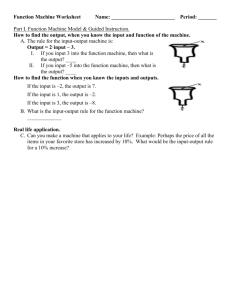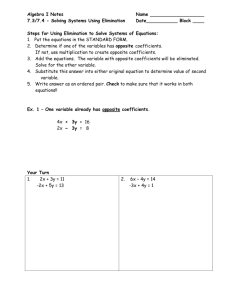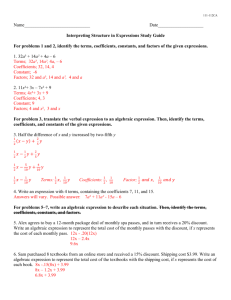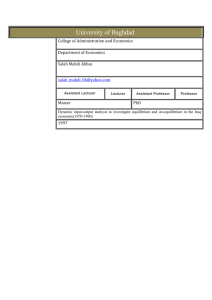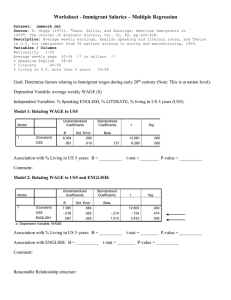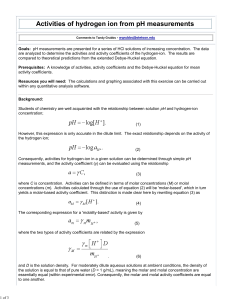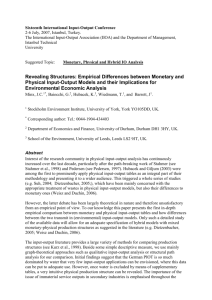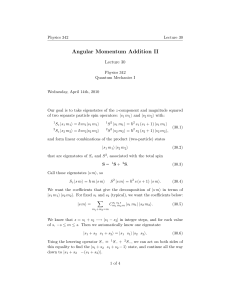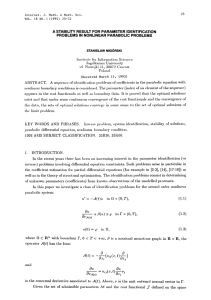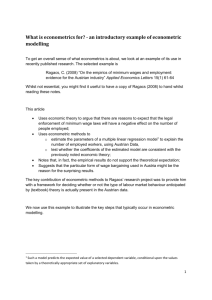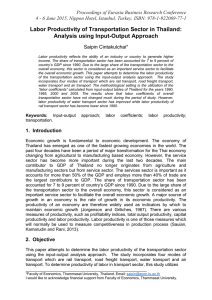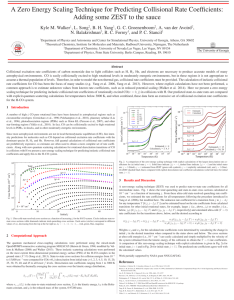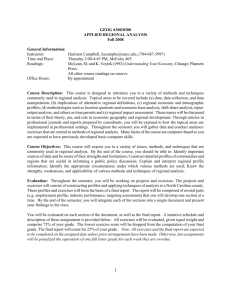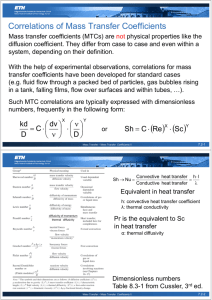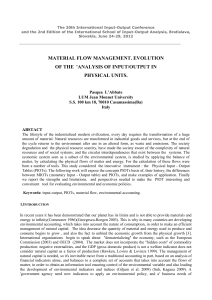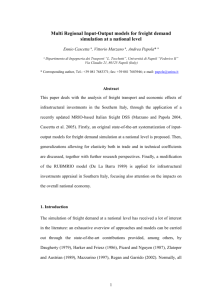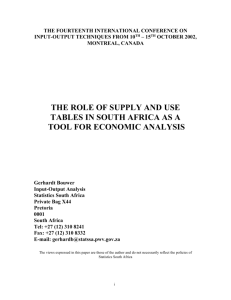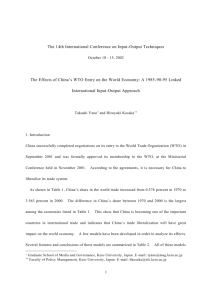Exercise IV
advertisement
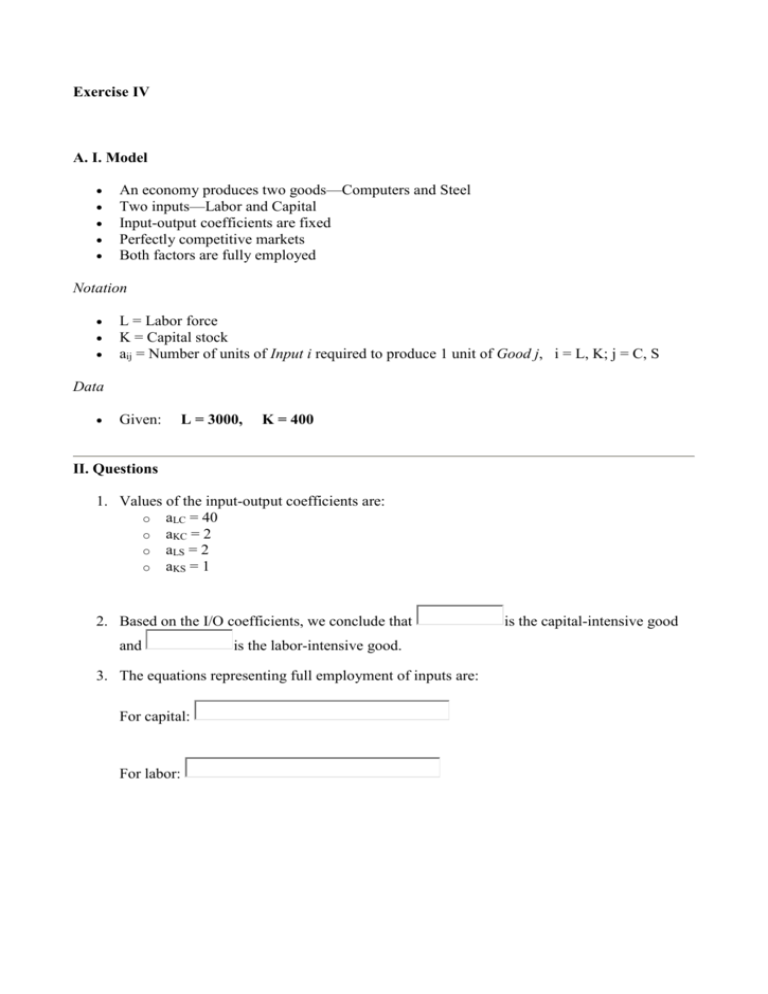
Exercise IV A. I. Model An economy produces two goods—Computers and Steel Two inputs—Labor and Capital Input-output coefficients are fixed Perfectly competitive markets Both factors are fully employed Notation L = Labor force K = Capital stock aij = Number of units of Input i required to produce 1 unit of Good j, i = L, K; j = C, S Data Given: L = 3000, K = 400 II. Questions 1. Values of the input-output coefficients are: o aLC = 40 o aKC = 2 o aLS = 2 o aKS = 1 2. Based on the I/O coefficients, we conclude that and is the labor-intensive good. 3. The equations representing full employment of inputs are: For capital: For labor: is the capital-intensive good 4. Sketch the lines corresponding to the equations in Q.3. Indicate the intercepts and slope of each line. 5. At full employment, the country will produce the following quantities: Computers: Steel: 6. Consider an improvement in technology. Suppose that the amount of labor required to produce a unit of computers is 10% less. Ceteris paribus, this will cause the quantities of the goods at full employment to be: Computers: Steel: B. I. Model An economy produces two goods—Good 1 and Good 2 Two inputs—Labor and Capital Input-output coefficients are fixed Perfectly competitive markets Both factors are fully employed Notation L = Labor force K = Capital stock aij = Number of units of Input i required to produce 1 unit of Good j, i = L, K; j = 1, 2 Pj = Price of Good j, j = 1, 2 Data L = 3000, K = 400 II. Questions 1. Values of the input-output coefficients are: o aL1 = 30 o aK1 = 3 o aL2 = 2 o aK2 = 1 2. The labor-capital ratios in the two sectors are: Good 1: workers/machine. Good 2: workers/machine. 3. From Question 2 we conclude that is the capital-intensive good and is the labor-intensive good. 4. Sketch the lines corresponding to the equations describing full employment of labor and capital. Indicate the intercepts and slope of each line. 5. At full employment, the country will produce the following quantities: Good 1: Good 2: 6. Suppose the output prices are: P1 = 200, P2 = 15. Assuming zero profits in both sectors, compute the equlibrium wage and rent on capital: Wage: Rent: 7. If trade liberalization leads to a rise in the price of Good 1 by 10%, the equilibrium values of input prices will now be: Wage: Rent:


